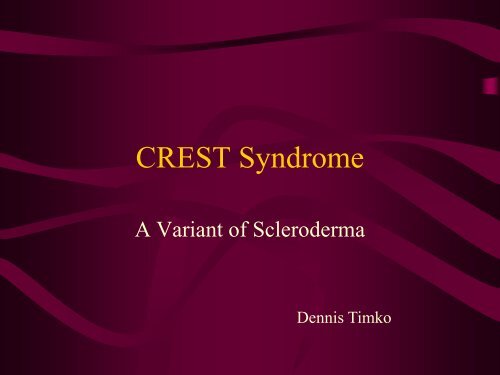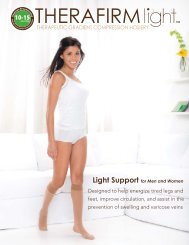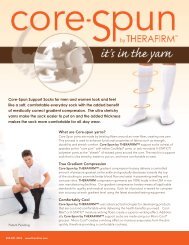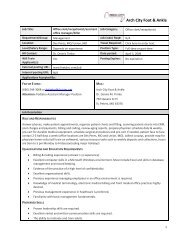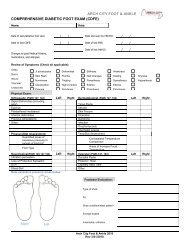Scleroderma & CREST Syndrome
Scleroderma & CREST Syndrome
Scleroderma & CREST Syndrome
- No tags were found...
You also want an ePaper? Increase the reach of your titles
YUMPU automatically turns print PDFs into web optimized ePapers that Google loves.
<strong>CREST</strong> <strong>Syndrome</strong>A Variant of <strong>Scleroderma</strong>Dennis Timko
<strong>Scleroderma</strong>• What is it?– “hard skin”– affects skin, joints, blood vessels, internalorgans• Epidemiology– (1:3)• Pathogenesis– overproduction of collagen ?
Pathogenesis of <strong>Scleroderma</strong>• Over production ofCollagen– Vascular disease– Autoimmune reaction– fibrotic reaction– Genetics ?
Diagnosis of <strong>Scleroderma</strong>• May overlap with CTD• History• Physical Exam• Lab Tests– ANA• anticentromere• topoisomerase I
<strong>Scleroderma</strong> Types• Systemic <strong>Scleroderma</strong> (SSc) (Generalized)– <strong>CREST</strong>– Limited: Hands, face, & neck– Diffuse: Wrists & Elbows• Localized– linear– morphea– generalized morphea– en coup de sabre
Diffuse vs Limited• 1st 2-4 years• Skin above the wrists• <strong>Scleroderma</strong> sans<strong>Scleroderma</strong>– internal organs fibrosis– no skin tightening• Milder form• Pitting digital ulcers• Raynauds• Esophageal problems• Slow onset• Good prognosis
Diffuse vs Limited
Localized <strong>Scleroderma</strong>• Morphea– hard, oval shaped patches w/ purplish ring– improves over time• Generalized Morphea– larger patches• Linear– line of thickened skin and deeper layers– can effect bones, muscles & joints– younger age• en coup de sabre : “stroke of a sword”
Morphea vs Linear
Morphea
<strong>CREST</strong> <strong>Syndrome</strong>• Calcinosis• Raynaund’s phenomenon• Esophageal dysfunction• Sclerodactyly• Telangiectasia
<strong>CREST</strong> Types• Pure <strong>CREST</strong>– 2 or more symptoms– Not limited or diffuse form• Plus <strong>CREST</strong>– Crest symptoms with other form of<strong>Scleroderma</strong>
Calcinosis• Calcium deposits inskin• Elbows, knees, fingers• Potential infection
Raynaud’s Phenomenon• 90% affected• induced by cold• bilateral• white to blue to red• perfusion pressure• capillary radius• blood viscosity
Raynaud’s Phenomenon
Esophageal Dysfunction• Hard to swallow dueto internal scarring• 50% of patients• lower 2/3 ofesophagus• Wide esophagus– heartburn– scarring– inflammation
Sclerodactyly• Tightening of skin ondigits• collagen production• Shiny appearance• Difficult to bend
Sclerodactyly
Telangiectasia• Dilation of smallblood vessels• Form red spots• Not harmful• On face, hands, &mouth behind lips
Treatment• No cure, treat symptoms• PT & ROM exercises• Medications– Nsaids– Skin moisturizers– Abx– Vasodilators• Treat the individual patient
Summary• Connective Tissue & Autoimmune disease• 2 main types– Systemic (Adults)– Localized (Children)• <strong>CREST</strong> is Systemic limited form• More common in Females• No genetic etiology• No cure right now


